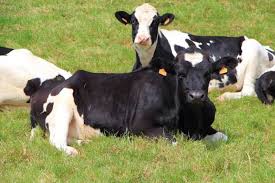Nigeria has begun importing high-yield dairy cattle from Denmark in a bold move to double its milk production within five years and slash the country’s $1.5 billion annual dairy import bill, according to the Minister of Livestock Development, Idi Maiha.
Speaking in Abuja on Monday, Minister Maiha outlined the Federal Government’s strategy to transform Nigeria’s dairy sector, noting that the country produces only 700,000 tonnes of milk annually while national consumption stands at 1.6 million tonnes. This leaves a 60% supply gap that is currently filled by expensive imports.
“Our goal is ambitious but achievable — to double Nigeria’s milk production from 700,000 tonnes to 1.4 million tonnes annually in the next five years,” Maiha declared.
Despite being home to one of the largest cattle populations in Africa, estimated at over 20.9 million, most of Nigeria’s cows are low-yielding, indigenous breeds kept by pastoralists. These animals are primarily reared for meat or multipurpose use and are not suited for high-volume milk production.
To bridge the productivity gap, the government is now investing in imported dairy genetics. One Nigerian dairy operation has already brought in over 200 high-yielding female dairy cattle, or heifers, from Denmark. These animals are being bred using intensive livestock management practices, including controlled feeding, health monitoring, and artificial insemination to increase milk output rapidly.
“This is not just about bringing in cows — it’s about improving the entire dairy ecosystem,” Maiha said.
In addition to importing superior dairy breeds, the Ministry has also registered eight new varieties of pasture grass — the first such registration in 48 years. These new pasture species are intended to provide better nutrition for dairy cows, which directly translates into higher milk yields.
“The better the grass, the better the milk,” Maiha noted, adding that improved feeding is a cornerstone of the government’s dairy expansion strategy.
The government is also rolling out a national strategy for managing animal genetic resources in collaboration with the Food and Agriculture Organization (FAO) of the United Nations. The plan is expected to guide breeding policies, support research and development, and improve herd productivity across Nigeria’s diverse agro-ecological zones.
Maiha emphasized that Nigeria is not starting from scratch, stating: “With over 20.9 million cattle, 60 million sheep, and 1.4 million goats already, we are not starting from zero — we are building from strength.”
Industry stakeholders have long pointed to the need for a more organized and technology-driven dairy sector. Nigeria’s reliance on pastoralism and informal production systems has made it difficult to meet growing domestic demand for dairy products such as milk, yogurt, cheese, and powdered milk — especially in urban areas.
The government’s current approach is a shift towards semi-intensive and intensive dairy farming models, with focus on improved genetics, nutrition, animal health, and milk collection systems. The hope is to integrate these modern practices into existing pastoral systems without displacing local communities.
Experts believe the use of imported dairy breeds, alongside a better-managed feed and genetics programme, could triple milk output per cow from the current average of 1–2 litres per day to 10–20 litres, which is standard in many commercial dairy systems around the world.
In a region where livestock contributes significantly to rural livelihoods, the plan also promises to generate thousands of new jobs across the value chain — from feed production to milk collection, cold storage, transportation, and dairy processing.
If successful, the dairy reform could reduce Nigeria’s dependency on imports, improve food security, and stimulate rural economies
